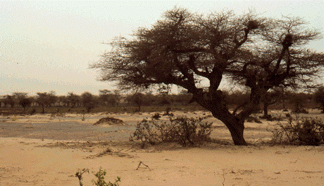 |
| Should India continue to receive aid from the UK? Photograph: Saurabh Das/AP |
Usually your author would attempt to write a balanced a piece which would arrive at a diplomatic conclusion. India receiving British aid is one of those issues which regardless of the worthy intentions of civil servants and ministers still rankles as a glaring aberration of the Government’s decision to maintain and increase the budget for the Department of International Development (DfID) at a time of fiscal austerity.
Before criticising DfID and its works in India, we should start by recognising a few truths. India is still a poor country – according to the World Bank India’s GDP per capita was just $1,450 compared to a world GDP per capita of $9,228. Despite its recent robust economic growth, according to evidence given by UNICEF to the International Development Committee (IDC) there are around 450 million people living on less than $1.25 per day and around half of the country still practise open defecation. This is a humanitarian shame which is as large in scale as many an instance more frequently publicised in Africa. Each year until 2015, the British Government will spend £280m per year in India.
To its credit, DfID has also gone out of its way to allay concerns that its development budget will be misallocated by posting details of the various projects which have benefited from its charity on its website. Its attempts to be transparent have been quite successful. The respected Publish What You Fund Pilot Aid Transparency Index ranks Britain joint first among donor countries behind the World Bank, The Global Fund to Fight AIDS, Tuberculosis and Malaria and the African Development Bank. At the urging of the IDC, DfID is focusing its resources on the three poorest states of India – Bihar, Orissa and Madhya Pradesh. It is felt that here the budgets will have the greatest impact on the local populous. A brief reading of DfIDs website shows that the Government is at pains to explain how they decide where aid is spent.
Aid is not provided free of responsibilities for recipient countries. Recipient countries (where aid is provided directly to their governments directly) are supposed to share commitments to four principles:
- Poverty reduction and the Millennium Development Goals
- Respecting human rights (from political freedoms, to the rights of minorities including Lesbian, Bisexual, Gay and Transgender (LBGT) and religious minorities) and other international obligations
- Improving public financial management, promoting good governance and transparency and fighting corruption
- Being more accountable to their citizens
Despite progress, India lags some way behind in being an effective partner in some of these areas. Corruption at India’s federal and state level is widely acknowledged as being commonplace. The site ipaidabribe.com acts a register of Indians who have attempted to access Government services only to be required to pay a bribe. The stories are as numerous as they are troubling.
 |
Rafale - The poverty which in some
states is as bad as more publicised problems in Africa, jars against the Indian
Government's determination to purchase Rafale fighter jets. Source: TopNew.in
|
Aid from Britain to India represents no more than 0.02% of India’s GDP. It is a drop in the ocean – so much so that even India debated whether it should continue to receive it. The total net official development assistance received for 2009 was a little over $2.5bn. With GDP topping $1.7trn, aid represents a measly 0.14% of India’s annual wealth.
At a recent Chatham House event, former British High Commissioner to Uganda, Cyprus and Kenya Sir Edward Clay said, “I would say that if there is a thread that emerges from our aid experiences over the last 50 years it is that it is most effective where countries are absolutely flat on their backs, which is a terrible thing to say, but I think there is some justice in that.”
India is not flat on its back – though parts of it are. It is within the Indian Government’s ability to create the adequate infrastructure for assisting its own people back on to their feet.





